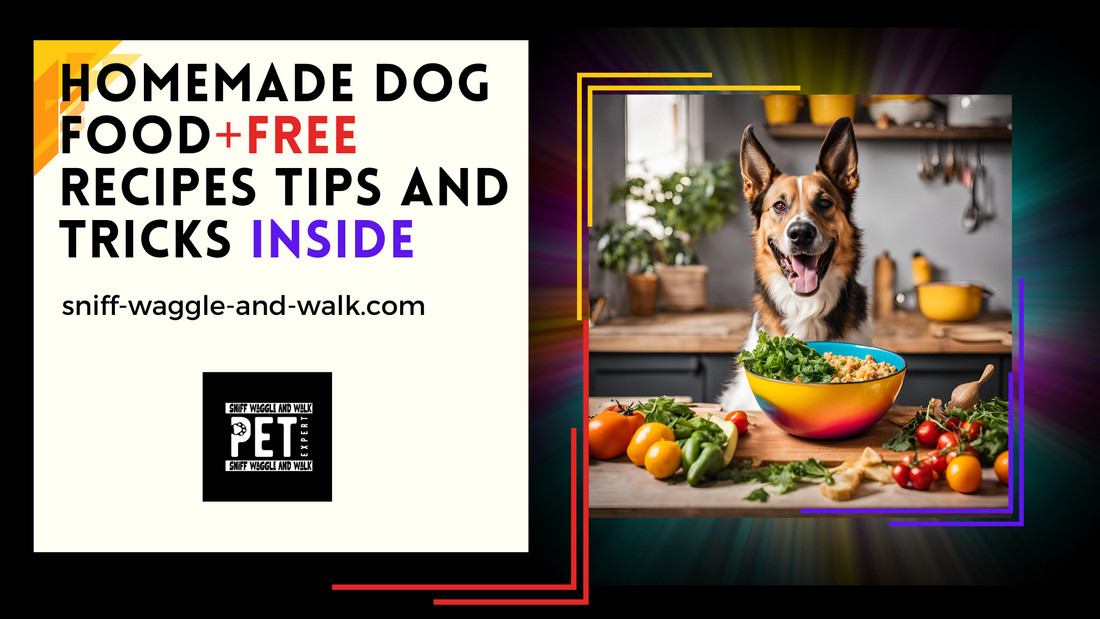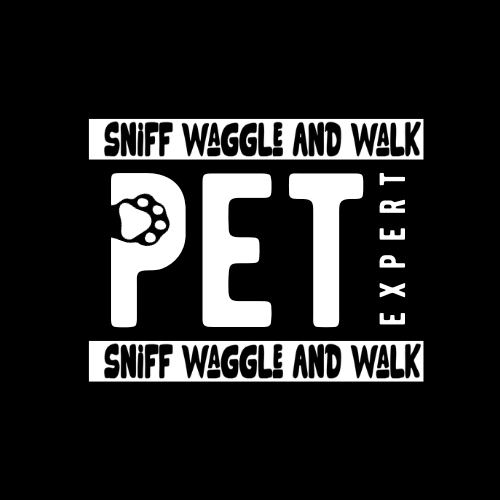
The Ultimate Guide to Homemade Dog Food+ Recipes, Benefits, and Tips!!
Share
Outline:
1. Introduction
- Importance of proper dog nutrition
- Why homemade dog food is gaining popularity
2. Benefits of Homemade Dog Food
- Control over ingredients
- Avoiding preservatives and fillers
- Customization for specific dietary needs
3. Common Ingredients in Homemade Dog Food
- Essential proteins
- Healthy carbohydrates
- Necessary fats
- Fruits and vegetables safe for dogs
4. Ingredients to Avoid in Homemade Dog Food
- Toxic foods like chocolate, onions, and grapes
- Harmful additives and seasonings
- Unsafe bones and raw meat considerations
5. Balanced Nutrition: What Your Dog Needs
- Protein requirements based on breed and age
- Vitamins and minerals for overall health
- Omega fatty acids for coat and skin health
6. Simple and Healthy Homemade Dog Food Recipes
- Chicken and rice meal
- Beef and vegetable stew
- Fish and sweet potato recipe
7. How to Store Homemade Dog Food
- Refrigeration tips
- Freezing for long-term storage
- Signs of spoilage
8. Transitioning Your Dog to Homemade Food
- Gradual introduction to avoid digestive issues
- Monitoring reactions and adjusting diet
- Consulting with a vet for proper guidance
9. Homemade Dog Treats: Easy Snack Recipes
- Peanut butter and banana biscuits
- Oatmeal and apple cookies
- Carrot and chicken jerky
10. Homemade vs. Commercial Dog Food: A Comparison
- Nutritional differences
- Cost comparison
- Convenience vs. control over quality
11. Special Diets: Homemade Food for Dogs with Allergies
- Identifying food allergies
- Limited ingredient diet options
- Alternative protein sources
12. The Role of Supplements in Homemade Dog Food
- Calcium and phosphorus balance
- Probiotics for gut health
- Vitamin and mineral supplements
13. Potential Risks and Challenges of Homemade Dog Food
- Nutritional deficiencies
- Time and effort required
- Risk of contamination if not stored properly
14. Vet-Approved Guidelines for Homemade Dog Food
- Importance of consulting a veterinarian
- Regular health check-ups
- Adjusting diet based on dog’s life stage
15. Conclusion
- Summary of key points
- Encouragement to provide the best nutrition for pets
1. Introduction
When it comes to keeping our furry friends happy and healthy, diet plays a crucial role. With concerns over commercial dog food ingredients, many pet owners are turning to homemade dog food as a safer and healthier alternative. By preparing meals at home, you have complete control over what goes into your dog’s bowl, ensuring they get the best nutrition without harmful additives.
Homemade dog food isn't just a trend; it's a conscious choice to provide balanced, wholesome meals tailored to your pet's specific needs. But how do you ensure your dog gets all the necessary nutrients? In this guide, we’ll cover the benefits, ingredients, recipes, and expert tips to help you create nutritious homemade meals for your beloved pup.
2. Benefits of Homemade Dog Food
Switching to homemade dog food comes with multiple benefits, including:
✔ Control Over Ingredients
When you make your dog’s food, you know exactly what’s going into it. No mystery meat, no artificial fillers-just real, high-quality ingredients.
✔ Avoiding Preservatives and Fillers
Many commercial dog foods contain artificial preservatives, by-products, and unnecessary fillers that offer little nutritional value. Homemade meals eliminate these concerns.
✔ Customization for Dietary Needs
Every dog is different! Some may have allergies, sensitive stomachs, or specific dietary needs. Homemade food allows you to customize meals based on your pet’s requirements.
✔ Improved Digestion and Energy Levels
With high-quality, natural ingredients, many dogs experience better digestion, fewer allergies, shinier coats, and increased energy levels.
✔ Stronger Immune System
Homemade dog food, rich in vitamins and minerals, can boost your dog's immune system, helping them stay healthy and active.
3. Common Ingredients in Homemade Dog Food
To create a balanced homemade diet, it's essential to include:
🦴 Essential Proteins
- Chicken
- Beef
- Turkey
- Fish
- Eggs
🥔 Healthy Carbohydrates
- Brown rice
- Sweet potatoes
- Oatmeal
- Quinoa
🥑 Necessary Fats
- Fish oil
- Flaxseed oil
- Coconut oil
🥦 Fruits & Vegetables Safe for Dogs
- Carrots
- Green beans
- Apples (without seeds)
- Blueberries
- Pumpkin
4. Ingredients to Avoid in Homemade Dog Food
Not all human foods are safe for dogs. Avoid these toxic ingredients:
🚫 Chocolate - Contains theobromine, toxic to dogs
🚫 Onions & Garlic - Can cause anemia
🚫 Grapes & Raisins - Can lead to kidney failure
🚫 Xylitol - Found in sugar-free products; highly toxic to dogs
🚫 Raw Bones - Risk of splintering and choking
Using the wrong ingredients can be dangerous, so always double-check what you’re including in your dog's meal.
5. Balanced Nutrition: What Your Dog Needs
A proper homemade dog food diet must include:
✅ High-Quality Protein (40-50% of the meal)
✅ Carbohydrates (30-40% for energy)
✅ Healthy Fats (10-15% for skin and coat health)
✅ Vitamins & Minerals (from fruits and vegetables)
Getting the right balance ensures your dog gets everything they need to stay strong and active.
6. Simple and Healthy Homemade Dog Food Recipes
Here are some vet-approved, easy-to-make dog food recipes:
🐶 Chicken & Rice Meal
Ingredients:
- 1 cup cooked chicken
- 1/2 cup brown rice
- 1/2 cup steamed carrots
- 1 tsp fish oil
Instructions:
- Cook chicken thoroughly and chop into small pieces.
- Mix with cooked rice and steamed carrots.
- Add fish oil and mix well.
- Serve warm and store leftovers in the fridge.
🐶 Beef & Vegetable Stew
Ingredients:
- 1 cup lean ground beef
- 1/2 cup sweet potatoes
- 1/2 cup peas
- 1/4 cup oats
Instructions:
- Cook the ground beef until browned.
- Add chopped sweet potatoes and peas.
- Stir in oats and cook for another 10 minutes.
- Let it cool before serving.
7. How to Store Homemade Dog Food
Once you’ve prepared a batch of homemade dog food, proper storage is crucial to keep it fresh and safe for your furry friend. Here’s how to do it right:
🐾 Refrigeration Tips
- Store homemade dog food in airtight containers to prevent contamination.
- Keep it refrigerated at below 40°F (4°C).
- It’s best to use refrigerated food within 3-5 days.
🐾 Freezing for Long-Term Storage
- If you prepare food in bulk, freeze portions in Ziploc bags or airtight containers.
- Label containers with dates to track freshness.
- Most homemade dog food stays fresh in the freezer for up to 2-3 months.
🐾 Signs of Spoilage
Before serving, always check for signs of spoilage:
❌ Bad odor
❌ Mold growth
❌ Change in texture or color
If any of these signs appear, discard the food immediately to avoid harming your pet.
8. Transitioning Your Dog to Homemade Food
Switching your dog’s diet from commercial food to homemade meals should be done gradually to avoid digestive issues.
🐶 Step-by-Step Transition Plan
- Day 1-2 – Mix 25% homemade food with 75% commercial food.
- Day 3-4 – Increase to 50% homemade, 50% commercial.
- Day 5-6 – Increase again to 75% homemade, 25% commercial.
- Day 7+ – Serve 100% homemade food.
🐾 Monitoring Reactions
- Look out for changes in stool consistency, energy levels, and coat health.
- If your dog experiences vomiting or diarrhea, slow down the transition.
- Always consult your vet if you notice any negative reactions.
9. Homemade Dog Treats: Easy Snack Recipes
Why stop at meals? Treat your pup with these healthy, homemade dog treats.
🍌 Peanut Butter & Banana Biscuits
Ingredients:
- 1 ripe banana
- 1/2 cup peanut butter (unsalted, xylitol-free)
- 1 cup whole wheat flour
Instructions:
- Preheat oven to 350°F (175°C).
- Mash the banana and mix with peanut butter.
- Add flour and mix until dough forms.
- Roll out and cut into shapes.
- Bake for 15 minutes until golden brown.
🍏 Oatmeal & Apple Cookies
Ingredients:
- 1 cup rolled oats
- 1/2 cup grated apple
- 1 egg
Instructions:
- Preheat oven to 350°F (175°C).
- Mix all ingredients in a bowl.
- Drop spoonfuls onto a baking sheet.
- Bake for 12-15 minutes.
These treats are safe, nutritious, and free from harmful additives!
10. Homemade vs. Commercial Dog Food: A Comparison
Many pet owners wonder: Is homemade dog food really better than store-bought? Let’s compare:
| Feature | Homemade Dog Food | Commercial Dog Food |
|---|---|---|
| Nutritional Control | ✅ Full control over ingredients | ❌ Often contains fillers & additives |
| Freshness | ✅ Made with fresh ingredients | ❌ Preserved for months |
| Customization | ✅ Can adjust for allergies or health conditions | ❌ One-size-fits-all approach |
| Cost | ❌ Can be expensive | ✅ Generally more affordable |
| Convenience | ❌ Requires preparation time | ✅ Ready-to-serve |
Homemade food wins in quality and customization, but commercial food remains more convenient.
11. Special Diets: Homemade Food for Dogs with Allergies
Some dogs have food allergies that require special diets.
🐾 Common Dog Allergens
🚫 Wheat
🚫 Chicken
🚫 Dairy
🚫 Soy
🐶 Limited Ingredient Diets
For allergy-prone dogs, try simple, single-protein meals like:
✅ Turkey & Quinoa Recipe
✅ Salmon & Pumpkin Mix
✅ Duck & Sweet Potato Meal
Switching to a limited-ingredient, homemade diet can significantly reduce allergy symptoms!
12. The Role of Supplements in Homemade Dog Food
Even with fresh ingredients, some key nutrients may be missing. That’s where supplements come in!
💊 Essential Supplements for Dogs
- 🐟 Fish Oil – Improves coat and skin health
- 🐾 Probiotics – Aids digestion and gut health
- 💀 Calcium & Phosphorus – Strengthens bones and teeth
- 🌿 Multivitamins – Provides missing nutrients
Always check with your vet before adding any supplements to your dog’s diet.
13. Potential Risks and Challenges of Homemade Dog Food
While homemade meals have many benefits, they come with some challenges:
🚨 Nutritional Deficiencies
A poorly planned diet can lack essential vitamins and minerals. Always follow balanced recipes or consult a vet.
⏳ Time & Effort
Homemade food requires time to prepare compared to commercial dog food.
⚠️ Risk of Contamination
- Always store food properly to avoid spoilage.
- Use fresh ingredients to prevent bacteria growth.
14. Vet-Approved Guidelines for Homemade Dog Food
Before switching to homemade meals, follow these expert tips:
✔ Consult a vet – Ensure your recipes are nutritionally complete.
✔ Rotate proteins – Prevent deficiencies by varying meats.
✔ Monitor your dog’s health – Watch for weight loss, lethargy, or digestive issues.
A well-planned homemade diet can be safe, nutritious, and beneficial for your furry friend.
15. Conclusion
Homemade dog food is a fantastic way to ensure your pet gets the best nutrition. It allows full control over ingredients, eliminates harmful preservatives, and customizes meals based on your dog's specific needs.
However, it’s important to follow balanced recipes, use fresh ingredients, and consult with a vet to avoid nutritional deficiencies. With proper planning, homemade dog food can lead to a healthier, happier, and longer life for your beloved pet!
Frequently Asked Questions (FAQs)
1. Is homemade dog food healthier than store-bought?
Yes! Homemade food contains fewer preservatives and higher-quality ingredients, making it a healthier choice.
2. How do I know if my dog’s homemade diet is balanced?
Ensure the meal includes protein, carbohydrates, healthy fats, and essential vitamins & minerals. Consult a vet or pet nutritionist for guidance.
3. Can I feed my dog raw food instead of cooked meals?
Raw diets are controversial. While some believe they offer benefits, raw food can carry bacteria and parasites. Cooking food is safer.
4. How much homemade food should I feed my dog?
It depends on your dog’s weight, age, and activity level. As a general rule:
- Small dogs: 1/2 to 1 cup per meal
- Medium dogs: 1 to 2 cups per meal
- Large dogs: 2 to 4 cups per meal
5. Can I mix homemade food with commercial dog food?
Yes! Mixing both can help transition your dog gradually while ensuring nutritional balance.
We’d love to hear about your homemade dog food journey! Have you tried any of the recipes in this guide? Share your experiences in the comments on our facebook page or tag us on social media using #SniffWaggleAndWalk.



